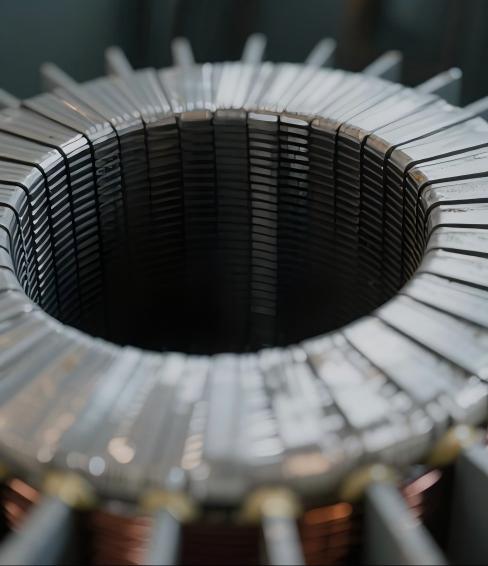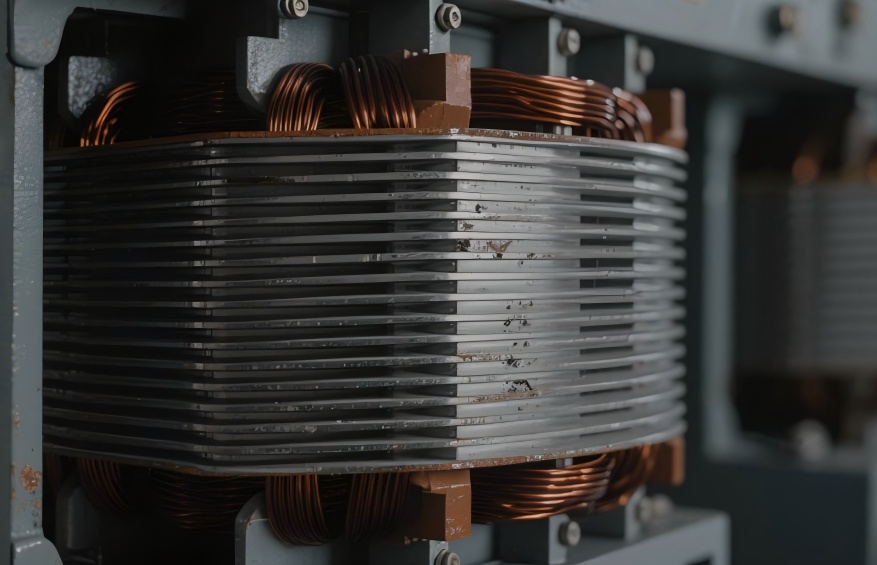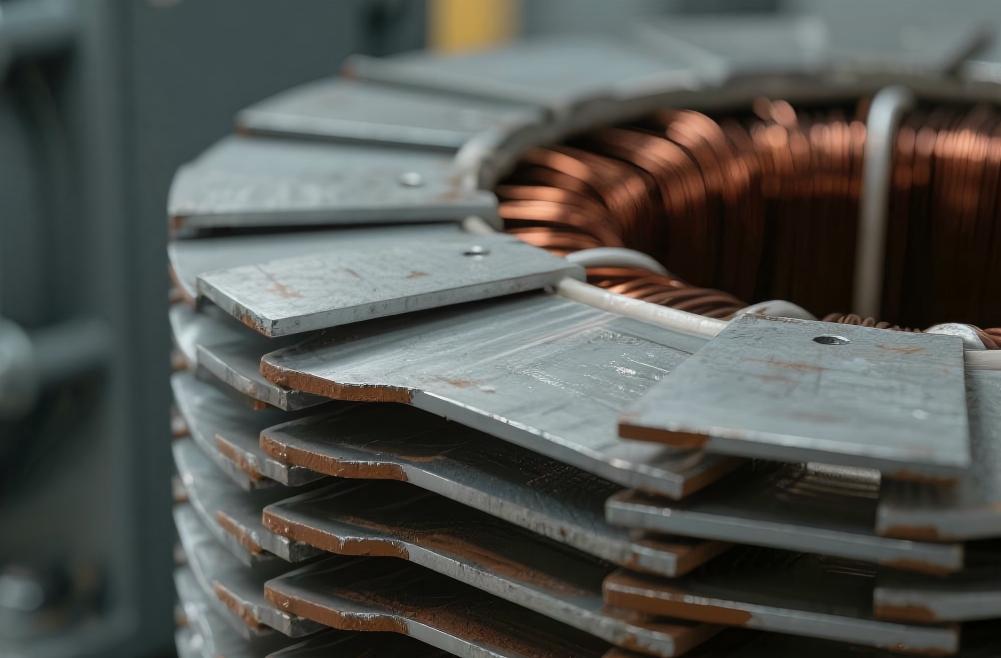
Acier au silicium (acier électrique)
• Caractéristiques : L'acier au silicium est le matériau de base le plus traditionnel. L'ajout de silicium (généralement de 3 à 5 %) augmente la résistivité pour réduire les pertes par courants de Foucault tout en maintenant une perméabilité magnétique élevée. Laminé à froid tôles d'acier au silicium ont une orientation des grains, ce qui peut optimiser davantage le chemin du flux magnétique.
• Avantages : Faible coût, résistance mécanique élevée et processus de fabrication mature, adapté aux applications à fréquence industrielle (50/60 Hz).
• Inconvénients : Les pertes fer augmentent significativement aux hautes fréquences (pertes par hystérésis + pertes par courants de Foucault) et le rendement est inférieur à celui des nouveaux matériaux.

• Applications :
• Pouvoir transformateurs (systèmes de distribution et de transport) ;
• Transformateurs industriels (équipements moyenne et basse fréquence).

2. Alliage amorphe (acier amorphe)
• Caractéristiques : Structure métal-verre avec arrangement atomique désordonné (comme l'alliage fer-bore-silicium), magnétisme isotrope, réduisant significativement les pertes par courants de Foucault et hystérésis. Les pertes de fer sont de 70 à 80 % inférieures à celles de l'acier au silicium.
• Avantages : rendement ultra élevé (perte à vide extrêmement faible), respectueux de l'environnement et économe en énergie.
• Inconvénients : fragilité mécanique élevée, traitement difficile, densité de flux magnétique de saturation relativement faible (environ 1,5 T) et coût 1,5 à 2 fois supérieur à celui de l'acier au silicium.
• Applications :
• Transformateurs de distribution à haut rendement (en particulier dans les scénarios d’économie d’énergie) ;
• Systèmes d’énergie renouvelable (onduleurs photovoltaïques, transformateurs éoliens).
3. Ferrite
•Caractéristiques : Matériau céramique (à base de MnZn/NiZn), haute résistivité (>10^6 Ω·m), supprime naturellement les courants de Foucault, mais la perméabilité magnétique varie considérablement avec la température.
•Avantages : Excellentes performances haute fréquence (1 kHz - 1 MHz), petite taille, coût modéré.
•Inconvénients : Faible densité de flux de saturation (<0,5 T), cassant, ne convient pas aux applications basse fréquence à haute puissance.
• Applications :
• Alimentations à découpage (SMPS), transformateurs RF ;
• Électronique grand public (chargeurs, téléviseurs, appareils de communication).

• Caractéristiques : Structure cristalline à l'échelle nanométrique (alliages à base de fer), combinant une densité de flux de saturation élevée (supérieure à 1,2 T) avec de faibles pertes haute fréquence et une bonne stabilité en température.
• Avantages : Les performances globales dépassent celles de la ferrite, les pertes haute fréquence sont comparables à celles des alliages amorphes.
• Inconvénients : coût élevé, processus de production de masse complexes.
• Applications :
• Transformateurs haute fréquence haut de gamme (équipements médicaux, aérospatiale) ;
• Modules de recharge pour véhicules électriques.
Autres matériaux
• Noyaux en poudre de fer : utilisés dans les inducteurs à moyenne fréquence, forte capacité anti-saturation mais pertes plus élevées.
• Permalloy (à base de nickel-fer) : perméabilité initiale extrêmement élevée, utilisée dans les instruments de précision, mais avec une perméabilité exceptionnellement élevée coût.
We will contact you as soon as possible
Hi! Click one of our members below to chat on